Abstract
Twenty strains of Clostridium botulinum type C, including 12 isolates from avian sources with varying toxigenic properties, were examined by electron microscope for the presence of bacteriophages. All toxigenic strains were infected with one or two types of phages. Three types of phages designated large, small, and intermediate were observed. Most of the strains carried the large and small phage, with the large phage being present in much greater numbers. Since there is evidence that highly toxigenic strains of C. botulinum type C are responsible for large outbreaks of botulism in wild birds, the phenomenon of toxigenic variation among the type C strains was investigated. Experiments were carried out employing a broth medium on a phagefree nontoxigenic strain for elucidating the role of bacteriophages in toxigenicity. All phage suspensions contained large phages, with the exception of one that caused conversion. The exception was a preparation containing an intermediate type of phage. Phages from different strains produced cultures of varying toxigenic characteristics. By employing a tube-lytic test and an agar-overlay-phage assay technique, it was determined that whenever the phage-bacterium relationship resulted in an initial high degree of lysis, the potency of toxin in the culture was weak. It appeared that in highly toxigenic strains, the phage-bacterium relationship is characterized by a stable lysogenic type of association. It was also found that in a highly toxigenic converted culture the percentage of toxigenic cells was 100, whereas in hypotoxigenic culture the percentage was only 20.
Full text
PDF



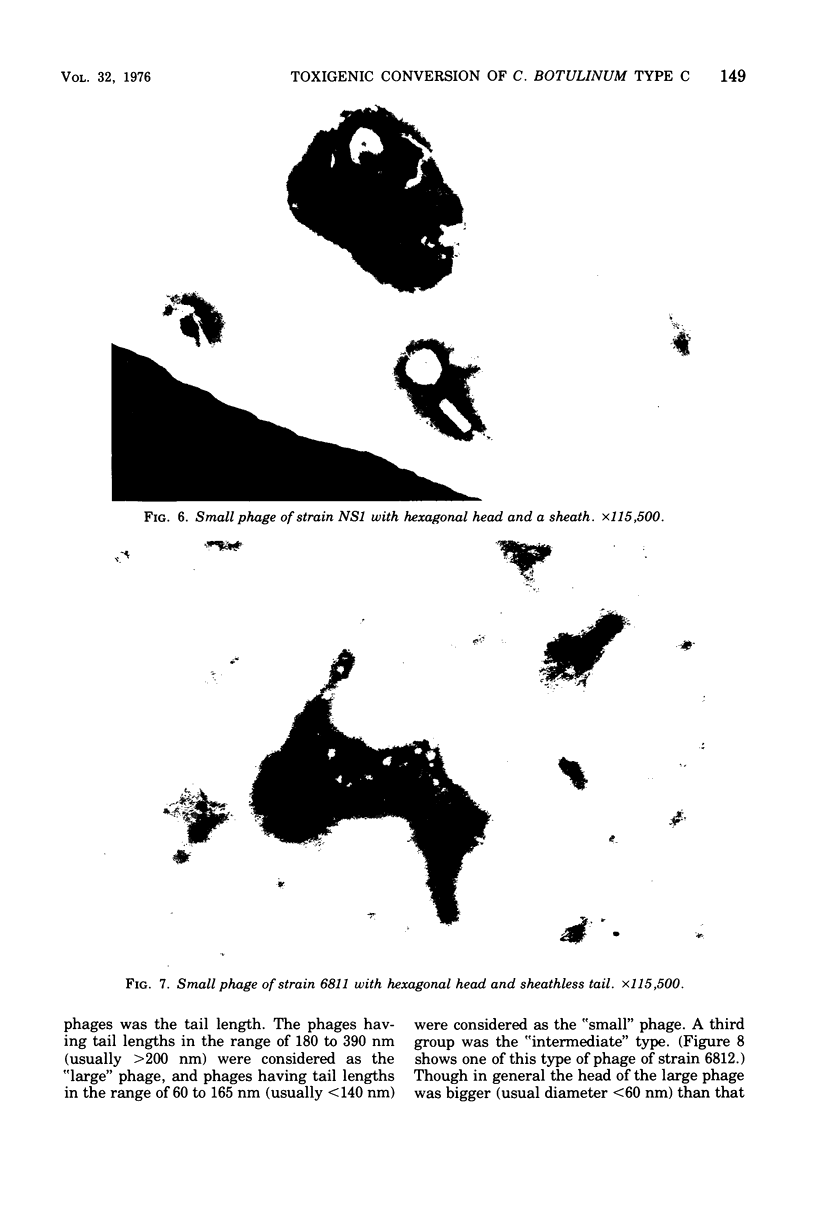




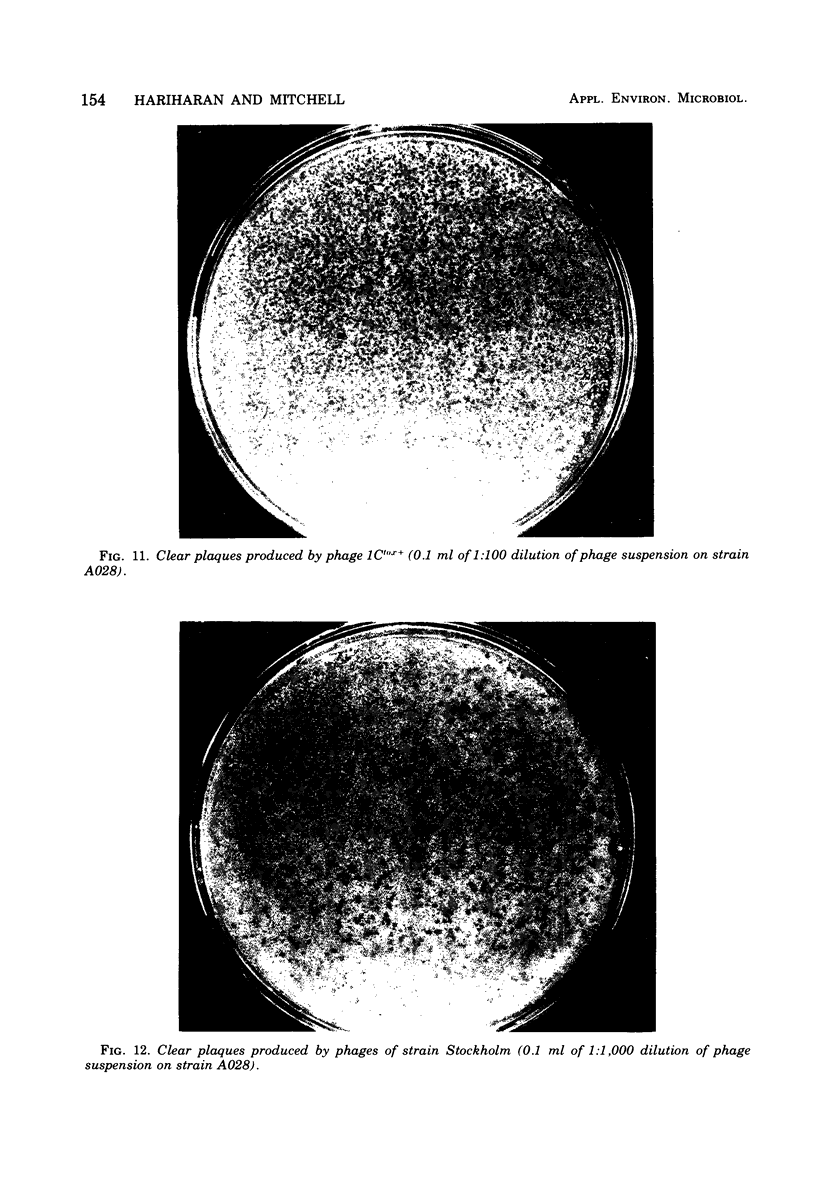
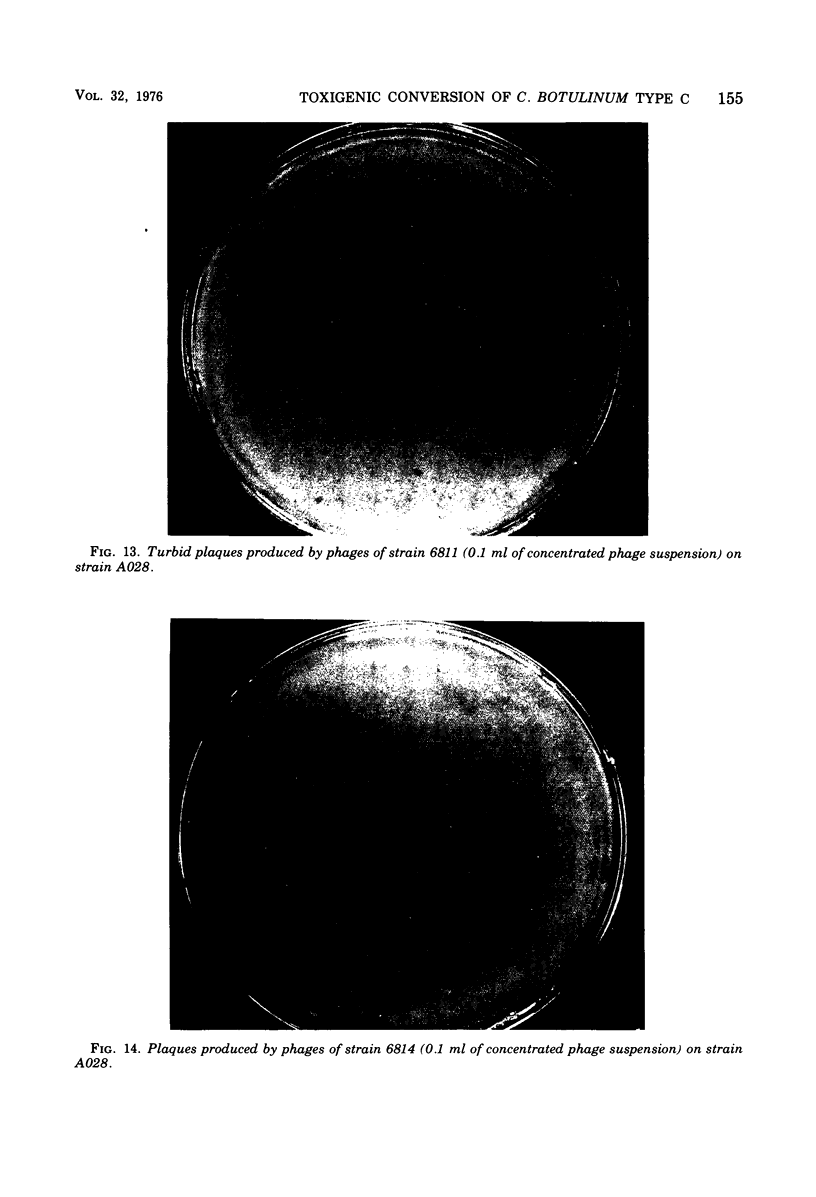
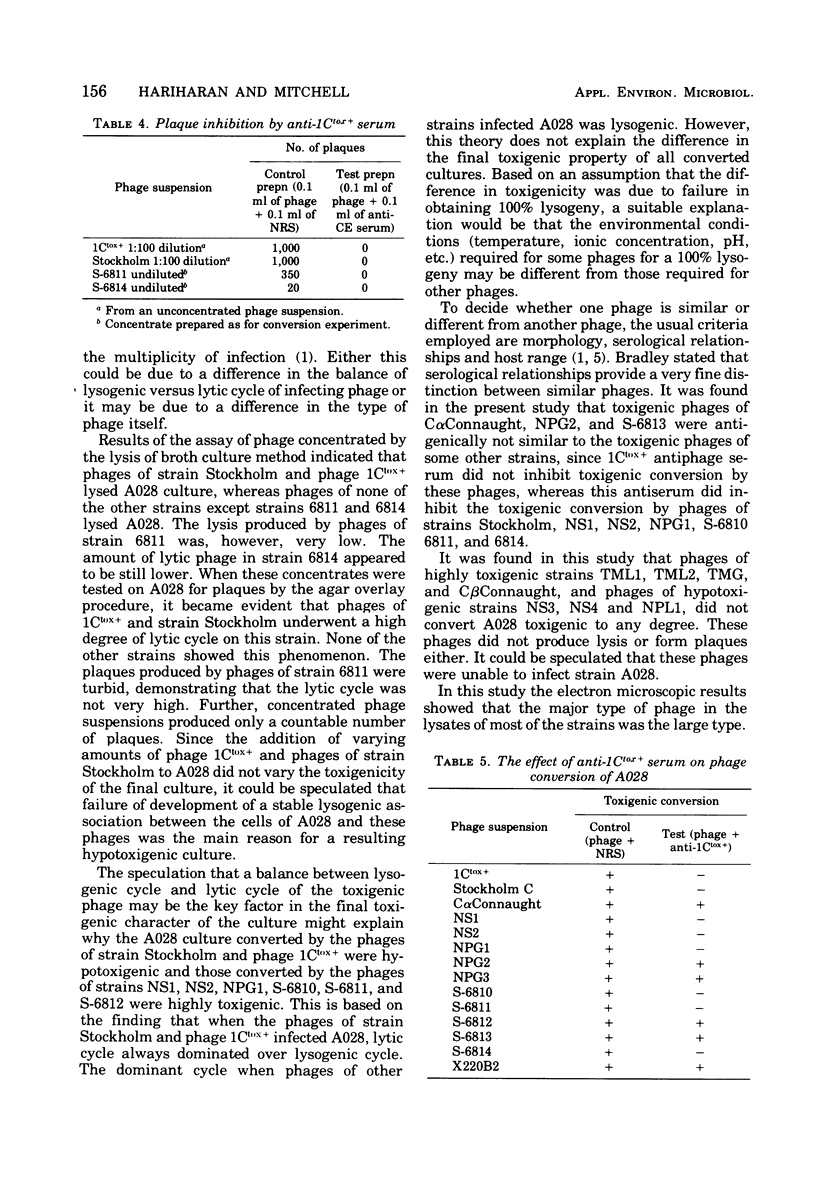
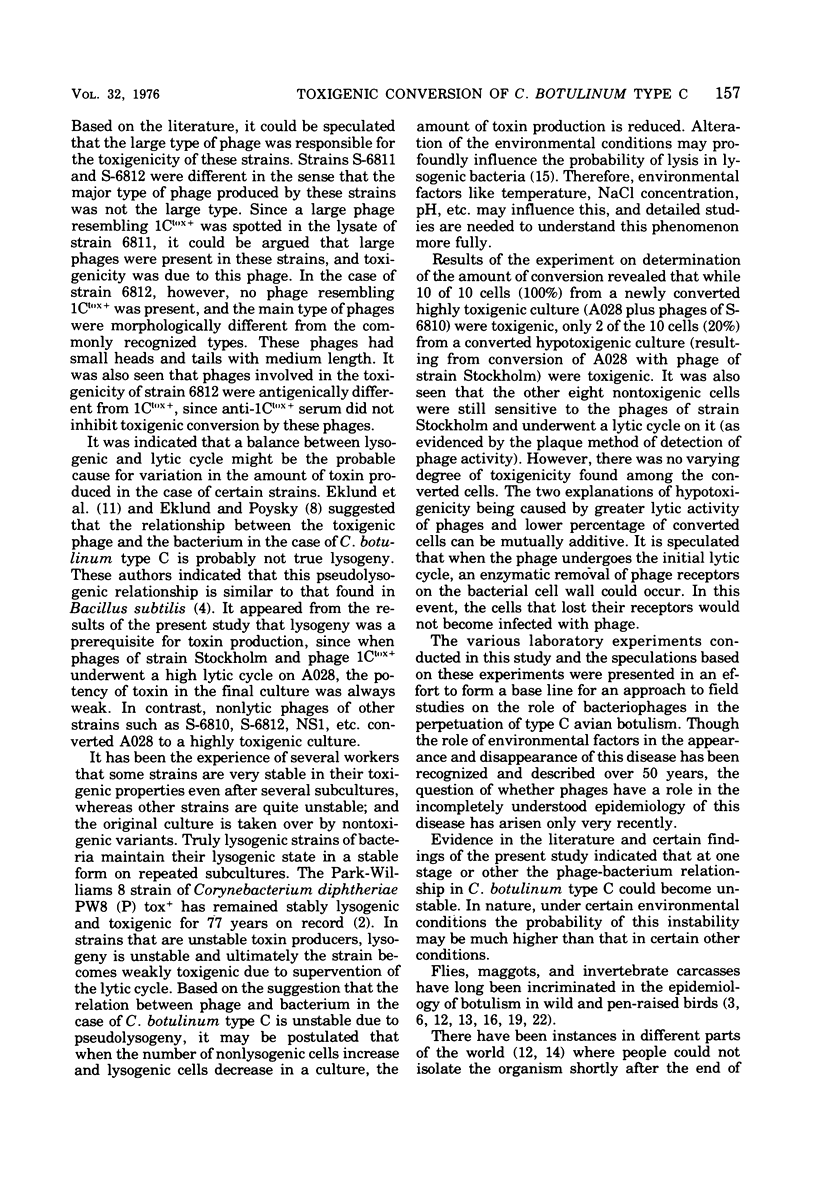

Images in this article
Selected References
These references are in PubMed. This may not be the complete list of references from this article.
- BOROFF D. A., REILLY J. R. Studies of the toxin of Clostridium botulinum. VI. Botulism among pheasants and quail, mode of transmission, and degree of resistance offered by immunization. Int Arch Allergy Appl Immunol. 1962;20:306–313. [PubMed] [Google Scholar]
- BOTT K., STRAUSS B. THE CARRIER STATE OF BACILLUS SUBTILIS INFECTED WITH THE TRANSDUCING BACTERIOPHAGE SP10. Virology. 1965 Feb;25:212–225. doi: 10.1016/0042-6822(65)90200-x. [DOI] [PubMed] [Google Scholar]
- Barksdale L., Arden S. B. Persisting bacteriophage infections, lysogeny, and phage conversions. Annu Rev Microbiol. 1974;28(0):265–299. doi: 10.1146/annurev.mi.28.100174.001405. [DOI] [PubMed] [Google Scholar]
- Bradley D. E. Ultrastructure of bacteriophage and bacteriocins. Bacteriol Rev. 1967 Dec;31(4):230–314. doi: 10.1128/br.31.4.230-314.1967. [DOI] [PMC free article] [PubMed] [Google Scholar]
- Dolman C. E., Chang E. Bacteriophages of Clostridium botulinum. Can J Microbiol. 1972 Jan;18(1):67–76. doi: 10.1139/m72-011. [DOI] [PubMed] [Google Scholar]
- Eklund M. W., Poysky F. T., Boatman E. S. Bacteriophages of Clostridium botulinum types A, B, E, and F and nontoxigenic strains resembling type E. J Virol. 1969 Feb;3(2):270–274. doi: 10.1128/jvi.3.2.270-274.1969. [DOI] [PMC free article] [PubMed] [Google Scholar]
- Eklund M. W., Poysky F. T. Interconversion of type C and D strains of Clostridium botulinum by specific bacteriophages. Appl Microbiol. 1974 Jan;27(1):251–258. doi: 10.1128/am.27.1.251-258.1974. [DOI] [PMC free article] [PubMed] [Google Scholar]
- Eklund M. W., Poysky F. T., Reed S. M. Bacteriophage and the toxigenicity of Clostridium botulinum type D. Nat New Biol. 1972 Jan 5;235(53):16–17. doi: 10.1038/newbio235016a0. [DOI] [PubMed] [Google Scholar]
- Eklund M. W., Poysky F. T., Reed S. M., Smith C. A. Bacteriophage and the toxigenicity of Clostridium botulinum type C. Science. 1971 Apr 30;172(3982):480–482. doi: 10.1126/science.172.3982.480. [DOI] [PubMed] [Google Scholar]
- Fish N. A., Mitchell W. R., Barnum D. A. A report of a natural outbreak of botulism in pheasants. Can Vet J. 1967 Jan;8(1):10–16. [PMC free article] [PubMed] [Google Scholar]
- Inoue K., Iida H. Conversion of toxigenicity in Clostridium botulinum type C. Jpn J Microbiol. 1970 Jan;14(1):87–89. doi: 10.1111/j.1348-0421.1970.tb00495.x. [DOI] [PubMed] [Google Scholar]
- Inoue K., Iida H. Phage-conversion of toxigenicity in Clostridium botulinum types C and D. Jpn J Med Sci Biol. 1971 Feb;24(1):53–56. [PubMed] [Google Scholar]
- Oguma K., Iida H., Inoue K. Bacteriophage and toxigenicity in Clostridium botulinum: an additional evidence for phage conversion. Jpn J Microbiol. 1973 Sep;17(5):425–426. doi: 10.1111/j.1348-0421.1973.tb00794.x. [DOI] [PubMed] [Google Scholar]














